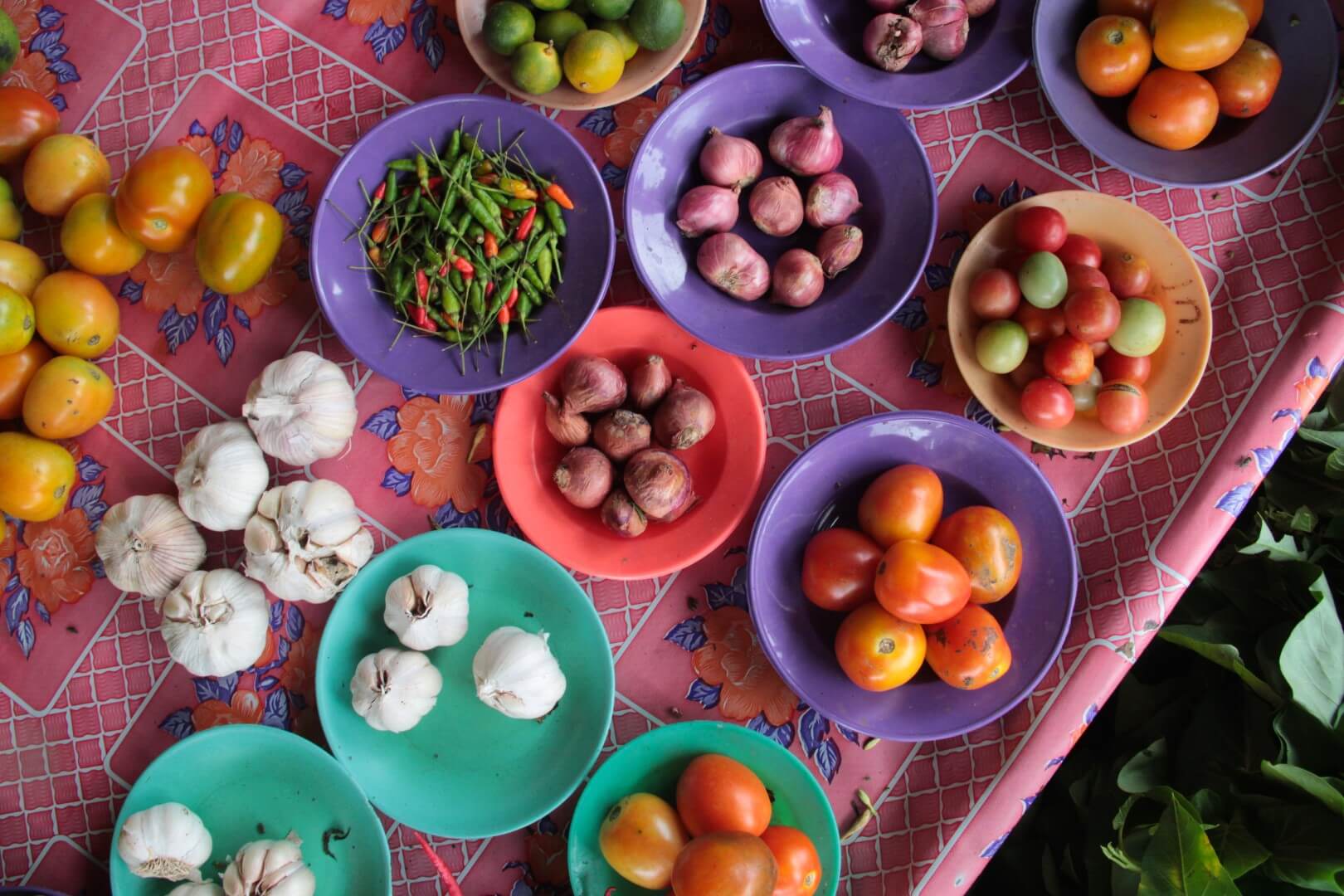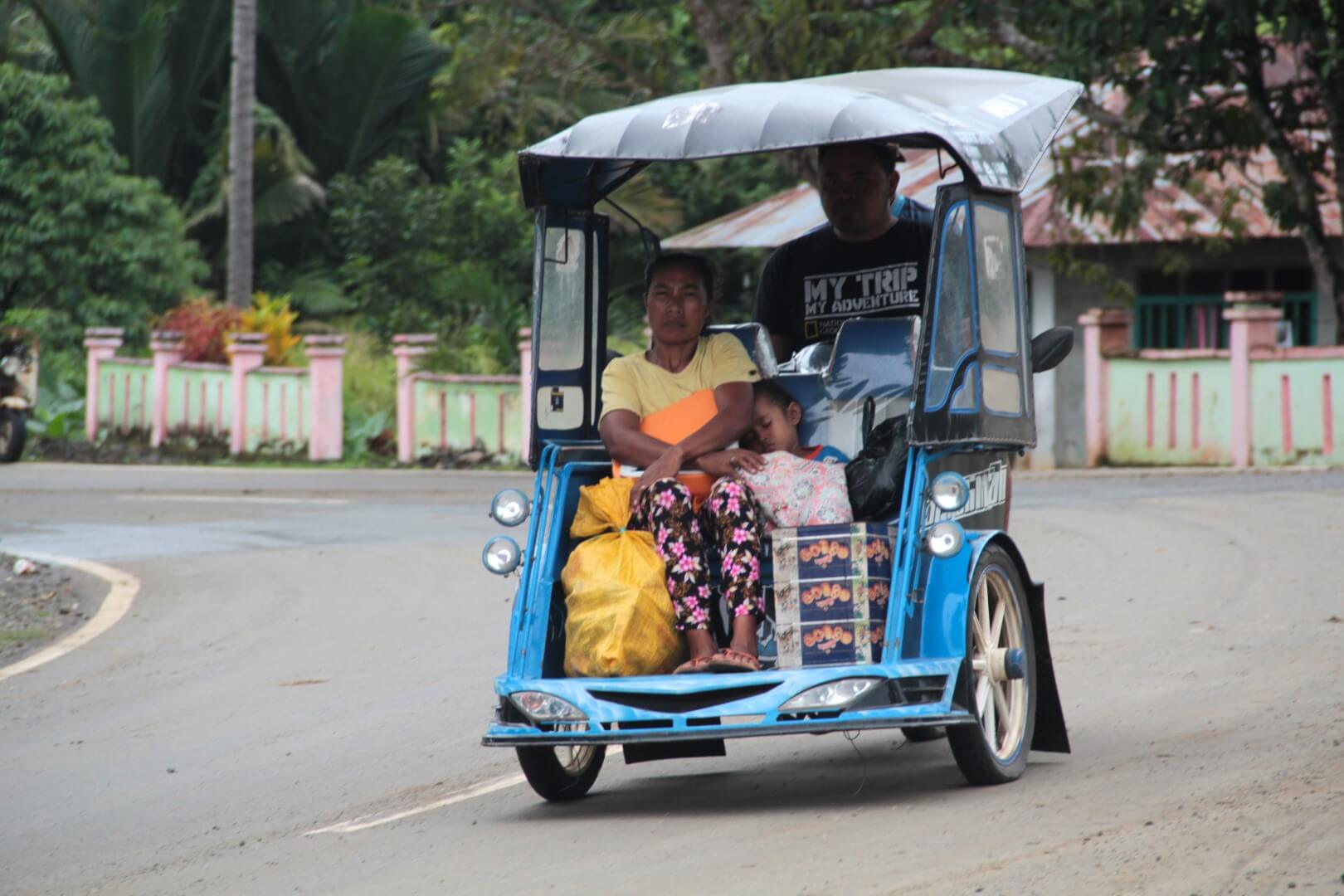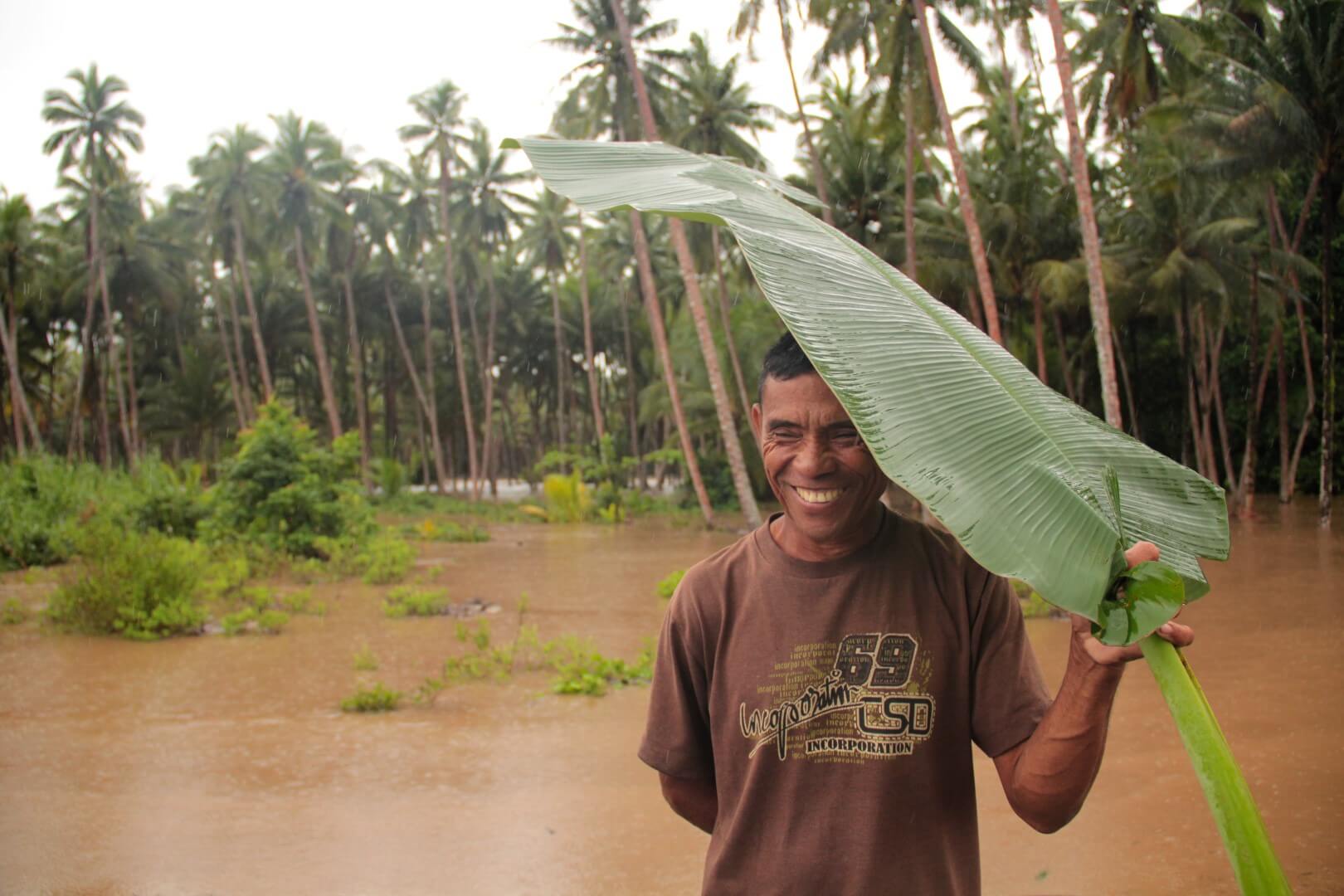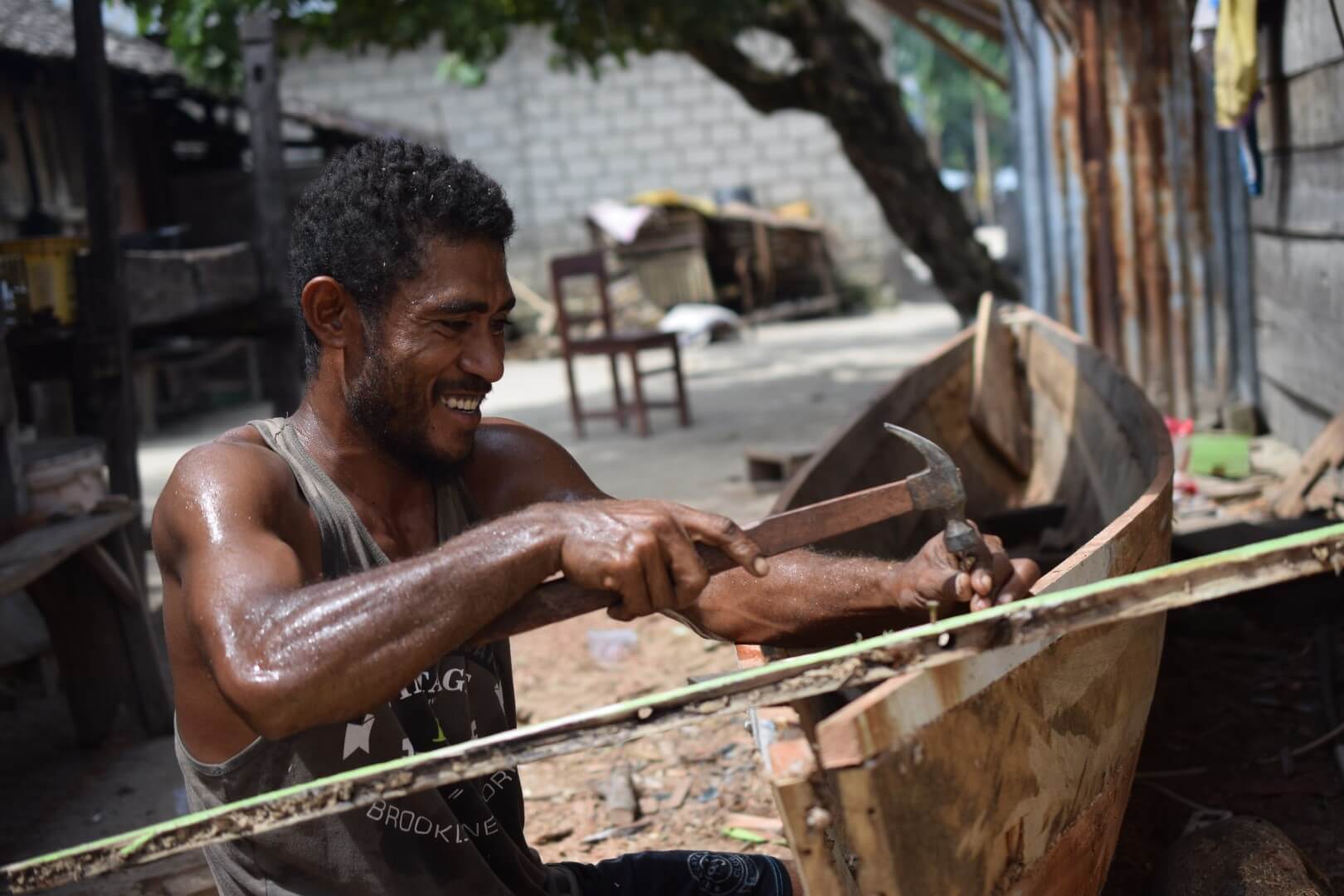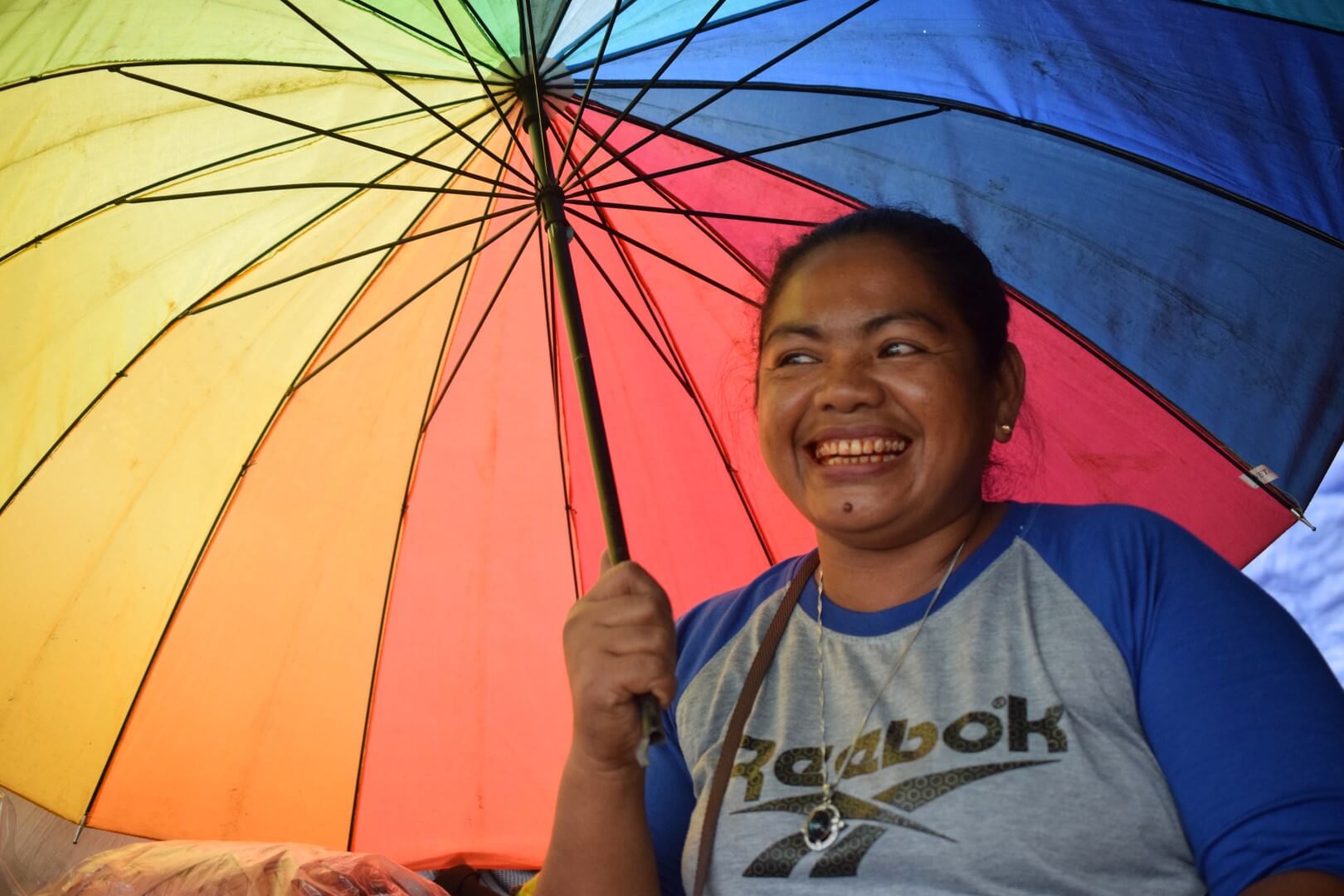panorama destination
panorama destination
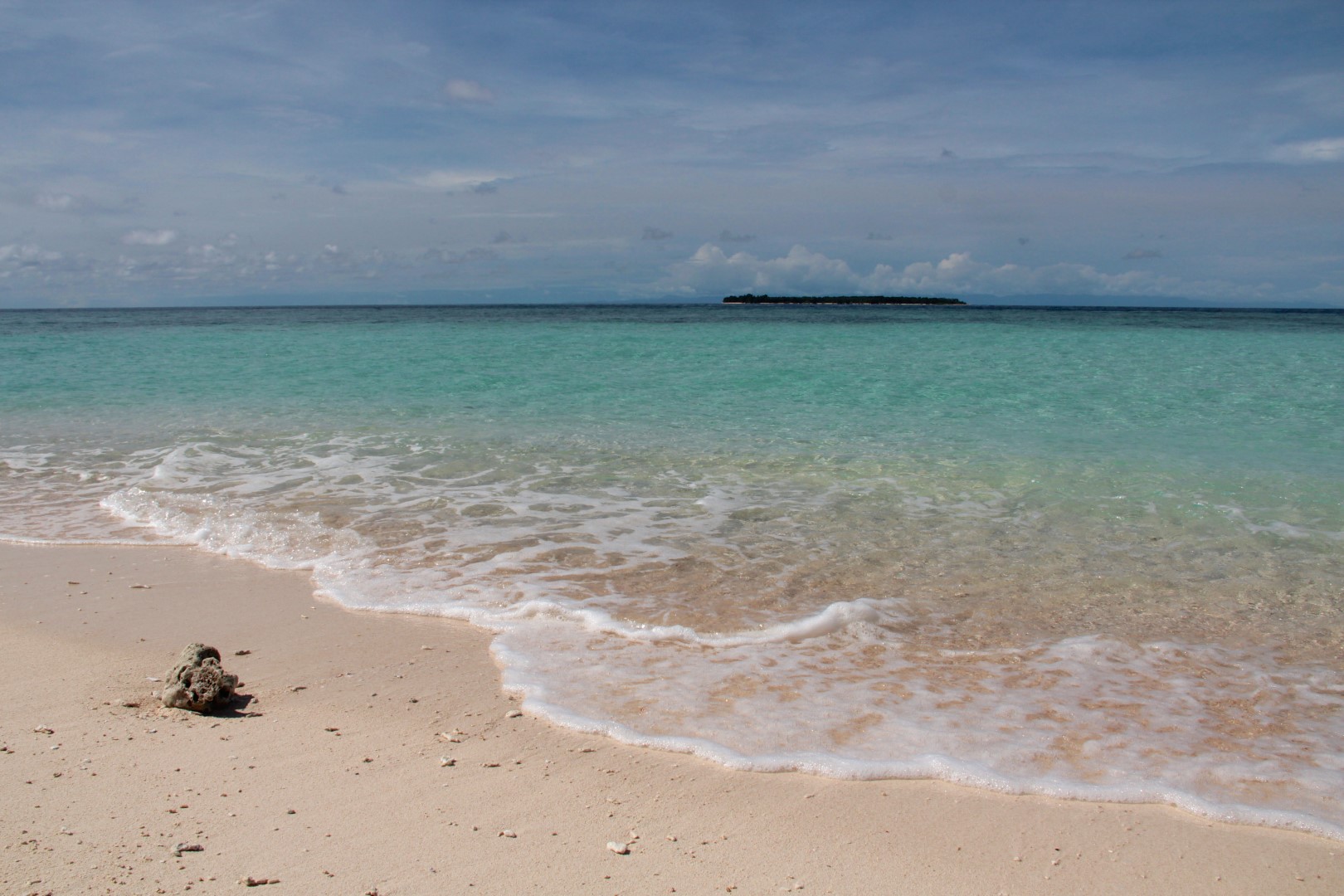
The most northern island of the Indonesian archipelago, Morotai is a little fleck of coral and forests, floating up into the South Pacific just off the coast of Ternate. A member of the Halmahera group in Indonesia's Maluku Islands (Moluccas), Morotai covers an area of about 1,800 km2 (690 sq miles), stretching 80 km (50 miles) from north to south and no more than 42 kilometres (26 miles) from east to west. The island's largest town is Daruba, on the island’s south coast, but there are loads of interesting villages, fishing ports, harbours and jungle enclaves to be explored.
Visitors to Morotai will find remote and secluded sandy beaches, waterfalls cascading at the end of evergreen jungle paths, charming villages, excellent diving and a unique historical backstory.
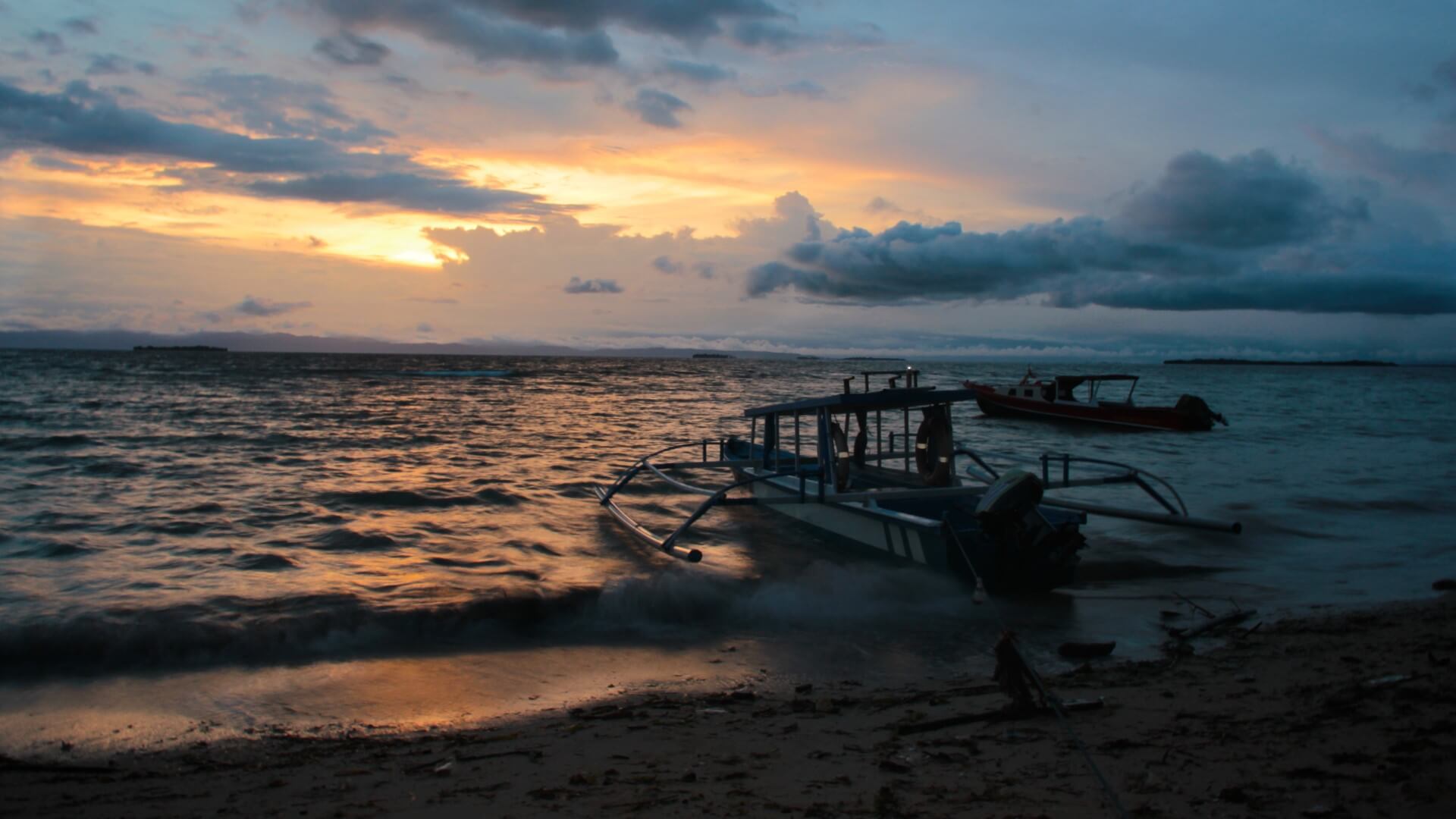


Don’t be fooled by the island’s remoteness or it’s languid appearance; Morotai was once a vitally important place and played a hand in determining the course of modern history.
During the Second World War, Morotai was a staging point for the American advance in the pacific and a key strategic victory in the allies’ campaign against the Imperial Japanese Army.
“The sea around the beach turned crimson with blood”
At 8:30am on 15th September 1944, a force of 60,000 American, Australian, British and Dutch troops landed on Morotai and engaged with the 500 Japanese soldiers who were garrisoned there. After 2 hours of intense fighting, the sea around the beach (now known as ‘Red Beach’) turned crimson with the blood of the fallen.
The fighting continued for almost a year, until 9th September 1945, when what was left of the Japanese army – reportedly only seventeen beleaguered survivors – formerly surrendered to General Douglas MacArthur. The allied advance into the Pacific had gained a valuable foothold. Today, a museum stands on the spot where the surrender was made.
Curiously, one Japanese soldier – named Nakamura – was discovered nearly three decades later in 1973, living out a life in hiding in the jungles of Morotai’s mountain interior and unaware the war was over.
Despite his solitude, Nakamura was not alone in his private war on Morotai. With storm clouds gathering like artillery fire in the skies up above, we set out in search of a local man who continues to keep the history of the island alive.
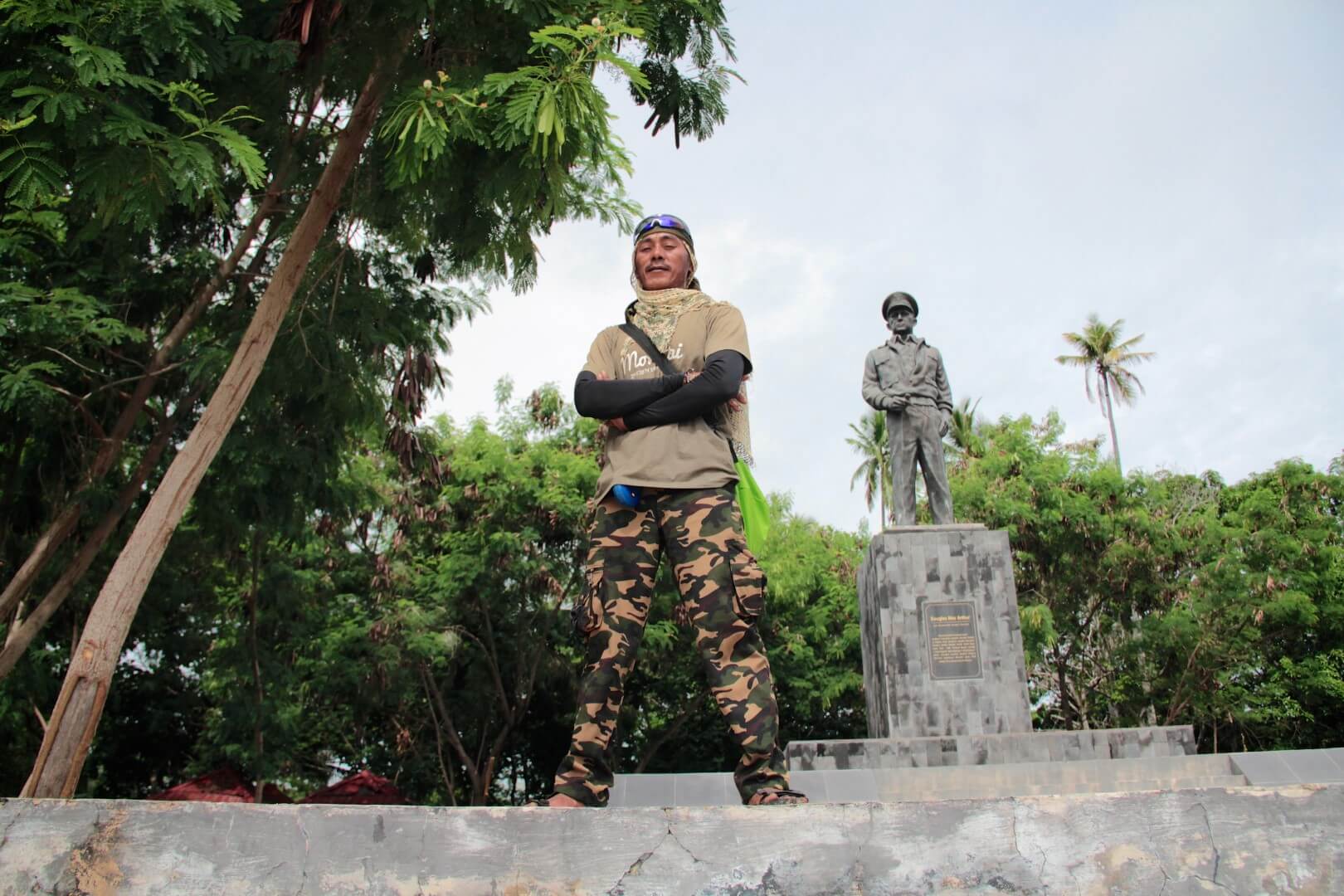
Dark brown eyes flash with excitement as his hands dig furiously in the dirt. With the sun beating down on the back of his army bandana, Pak Muhlis pulls a piece of metal from the earth and uncovers the latest addition to his collection of treasures; the safety catch from an American machine gun - a new find, rescued from the depths of Zum Zum island near Morotai.
Part man, part metal detector; Pak Muhlis Eso is a war enthusiast, archaeologist and local celebrity all rolled into one. He is also quite possibly the nicest man on Morotai.
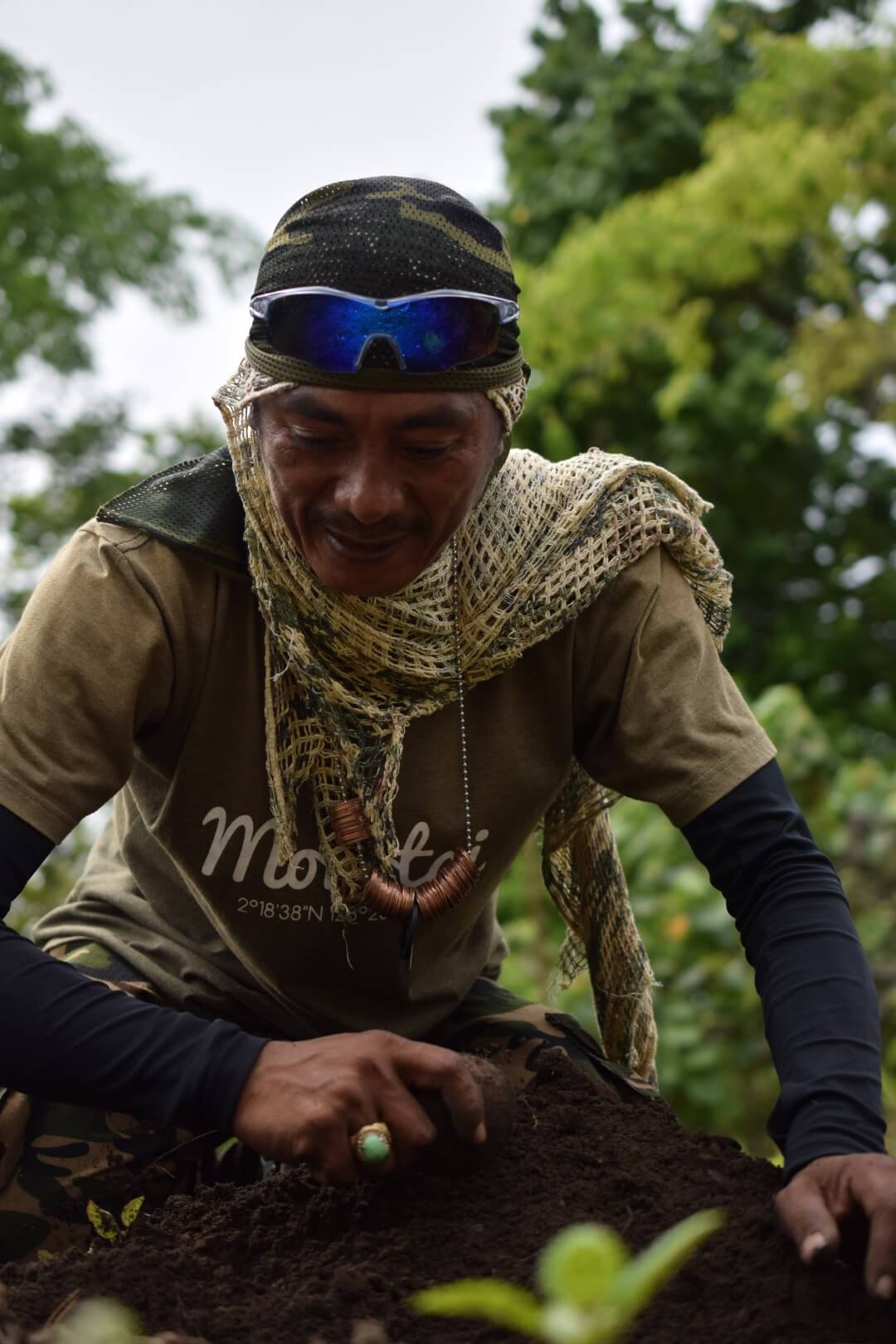
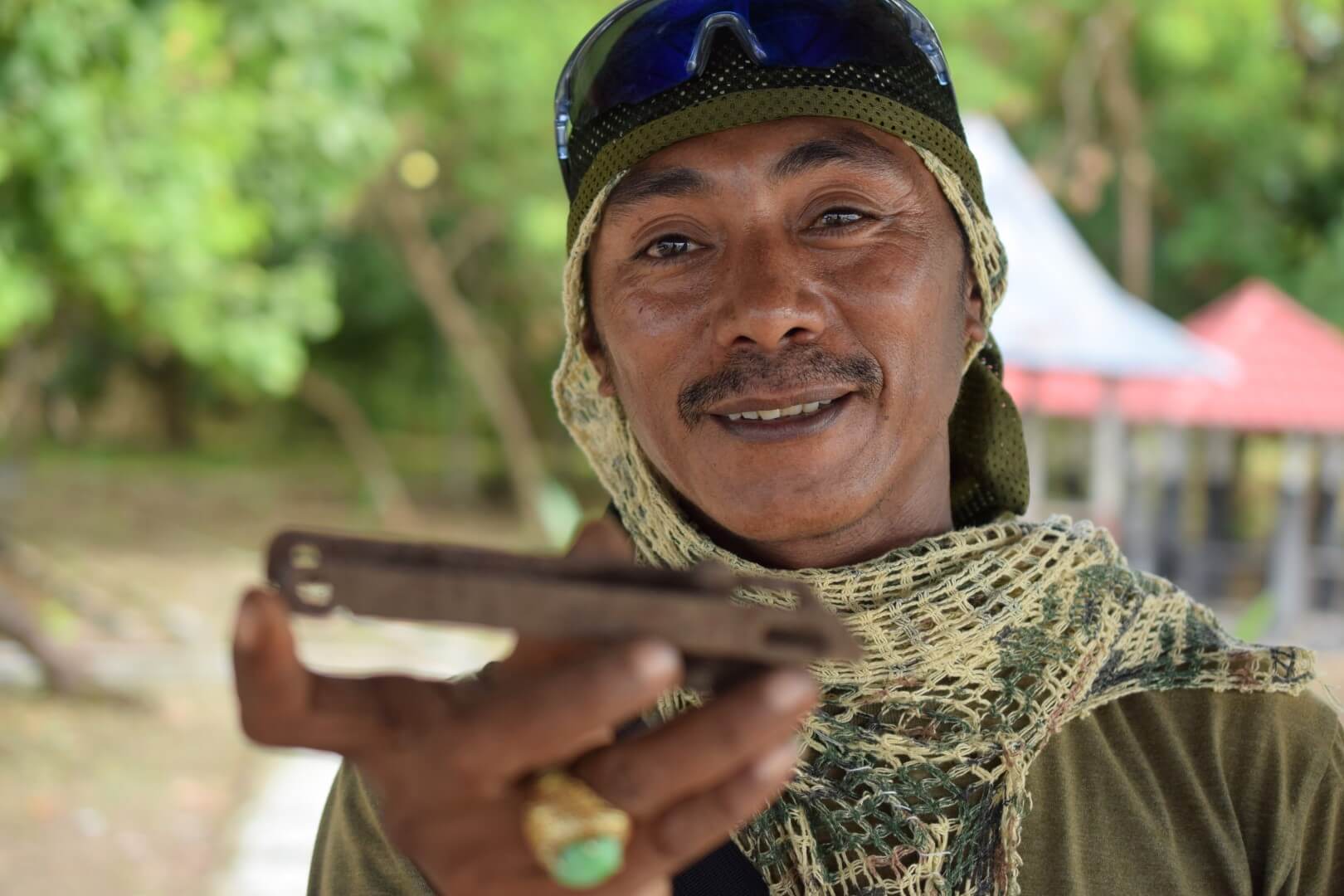
Over the past decades, Muhlis and his team of six other like-minded volunteers have uncovered countless treasures from the sands surrounding Morotai - from rifles and helmets, to dog tags, canteens, bicycles, cigarette lighters and mortar grenades.
Each of them are fishermen, drivers or coconut farmers, united by a singular purpose: they have resolved to preserve the heritage of their homeland and uphold the memories of men who served there nearly eighty years ago.
“An uncanny ability to find artifacts without any equipment other than a pointy stick”
On today’s visit to Zum Zum, under the watchful gaze of the island’s MacArthur monument, Muhlis floats quietly amongst the palm trees in a state of peaceful concentration. Locals say he has a sixth sense - an uncanny ability to find artifacts without any equipment other than a pointy stick and a lifetime of passion for his quarry.
In less than an hour, he uncovers fragments of a Japanese bowl, bullets, a glass lemonade bottle, a Dutch clay pot, and even a stone-age tool used by the island’s very first inhabitants for de-scaling fish. All artefacts are inspected with wide-eyed and child-like fascination, then carefully bundled up and sealed in a waterproof bag to be taken back to Morotai, where they will be added to Muhlis’ ever-expanding collection of relics from the war.
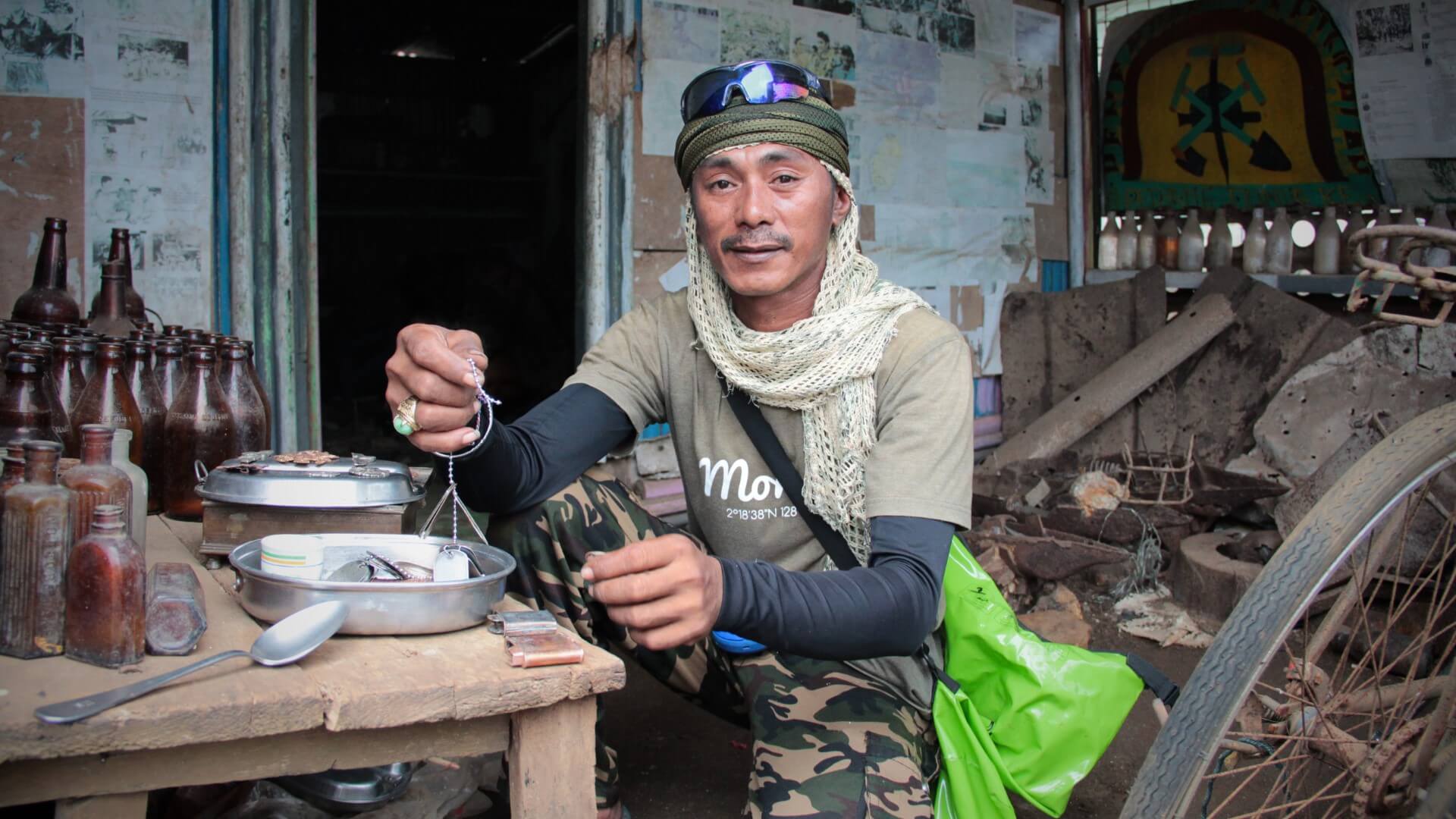
Back at his home – a simple shack with corrugated iron roof and floors of packed earth – Muhlis sits surrounded by his finds, all piled up to the rafters and spilling out of drawers. His own personal arsenal of antiquities.
“A personal insight into the lives of the servicemen of Morotai”
His favourite finds are the dog tags, because, as he explains: “they have a personal touch”. He shows us an ornate china eggcup from the Maitland Café in New South Wales, carried to the distant shores of Morotai by an unknown Australian soldier, possibly as a comforting little keepsake from home. This item, along with so many others in Muhlis’ collection, offers a touching insight into the personal lives of the servicemen of Morotai; a fingerprint from history.

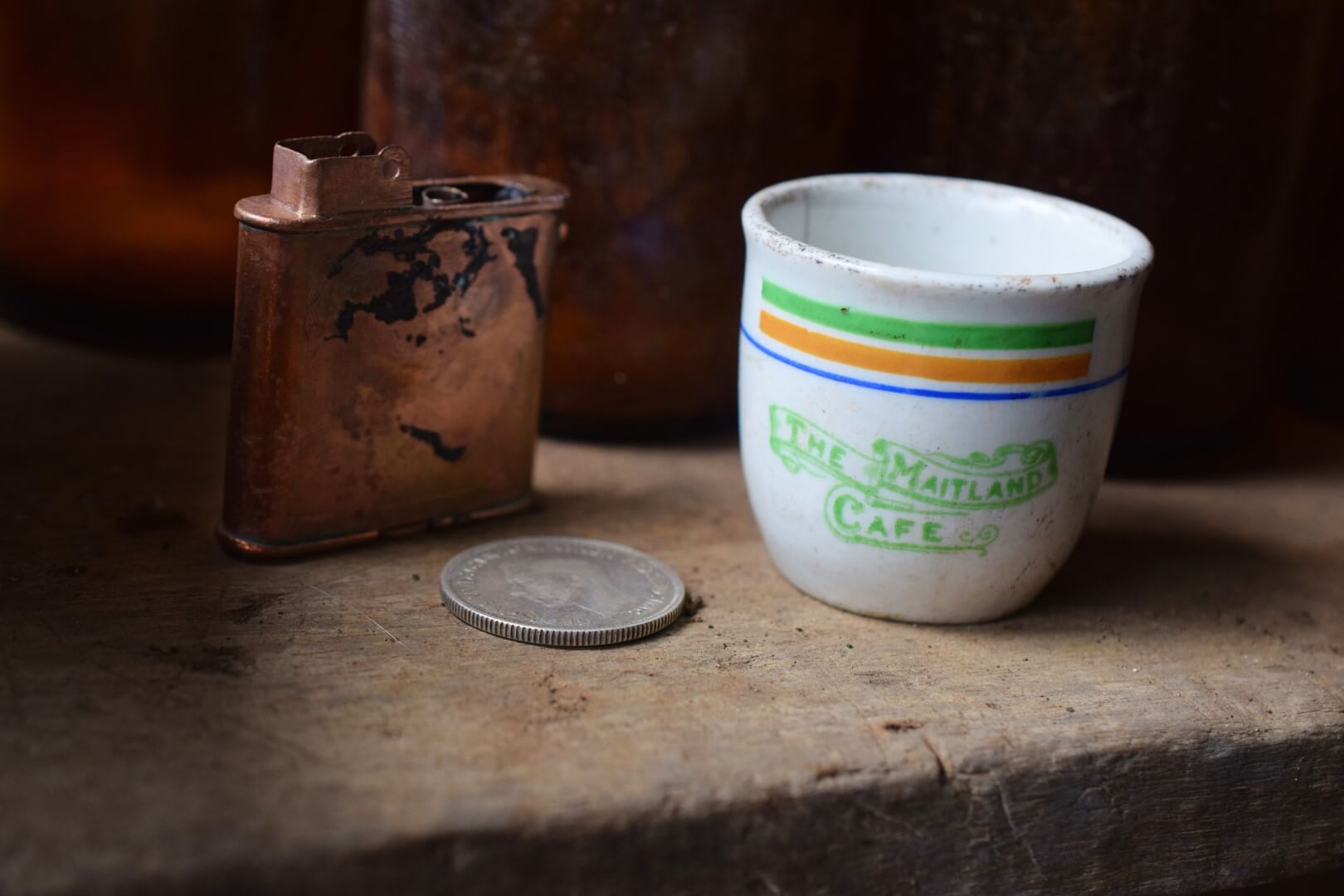
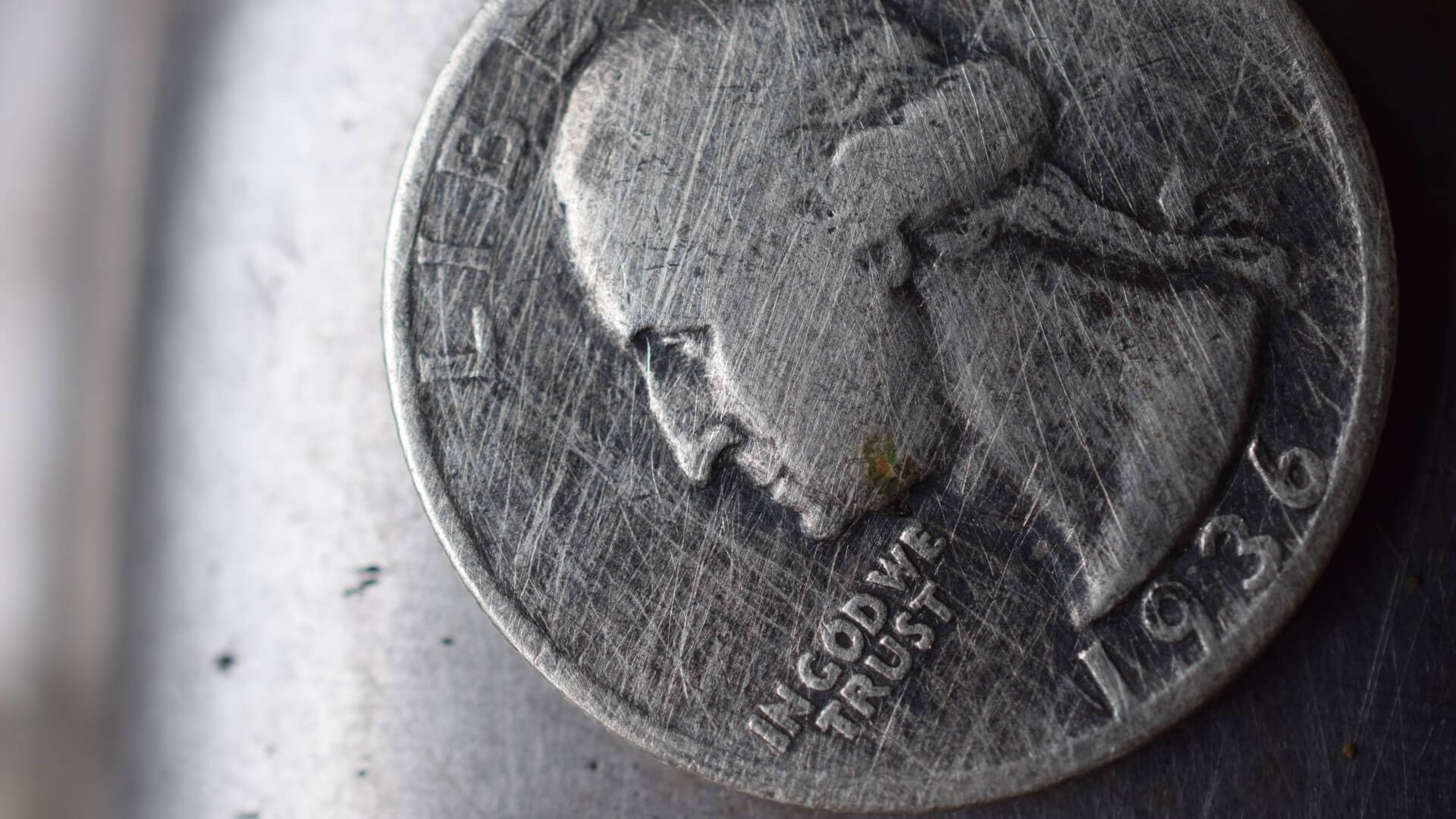
Outside, chickens scratch in the dirt. Children on their way home from school step around muddy puddles, pockmarking the road like bomb craters. Many of them stop to stare at this strange man, sitting on a goldmine of antiques but bound to poverty by his principles and a twenty-year-old promise.
Muhlis’ grandfather served in the war. When he was just ten years old, the young Muhlis promised he would take care of the wartime treasures and preserve the history of Morotai for the pride of the island, but also to respect the memories of the men from far away who fought here.
“A mission more important than money”
Despite its value, Muhlis’ collection is not for sale. He gives most of his treasures to the local museums, so they can be exhibited for the world to see. Some people in Morotai say he is crazy; living in a rundown shack on rented land, when he could easily auction off his finds and retire into a life of luxury. Other collectors on the island sell their dog tags for as much as 5 million rupiah each (around $375 USD). For Muhlis, his mission is more important than money: “I am preserving the history of Morotai first for its people, and second for the memories of the foreigners who fought here,” explains Muhlis. “To sell out the history would be to dishonor the memory. Surely that would be crazy.”
Several veterans and their families have since returned to Morotai. In search of their past, they find a quietly determined local man named Muhlis, acting as the custodian of their family members’ legacy; a modern-day hero, standing guard over long-lost treasures on a forgotten shore, in this quiet little corner of the South Pacific that once changed the world.
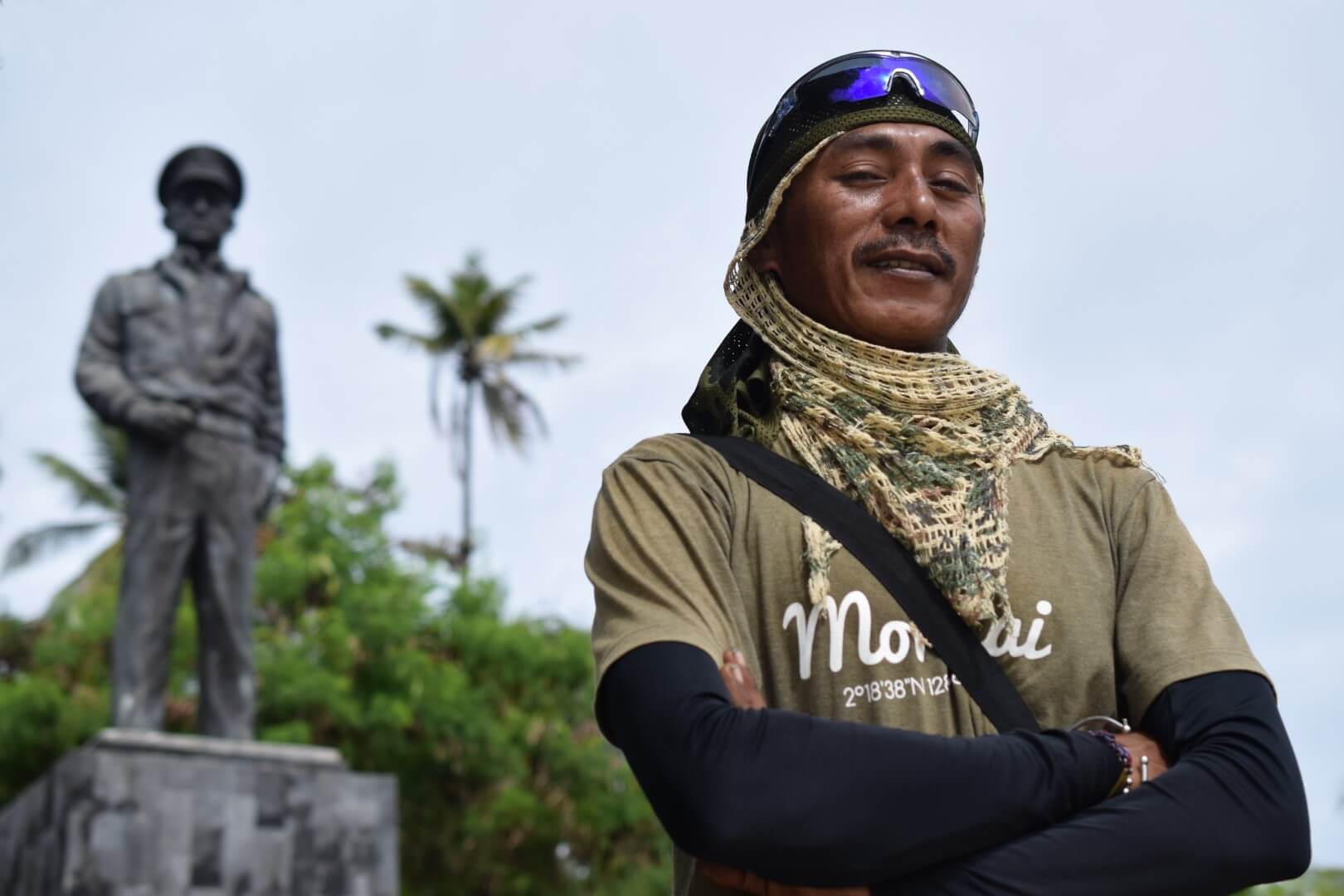
For visitors to Morotai today, the island is filled with treasures from the past; two tanks lie stranded in a coconut grove, riddled with bullet holes from a Japanese ambush; five crumbling jetties form the ruins of a US Army harbour, which hints at the scale of operations that once made this island such an essential landing ground; and many intriguing world war two artifacts, both large and small, continue to emerge from the sand.
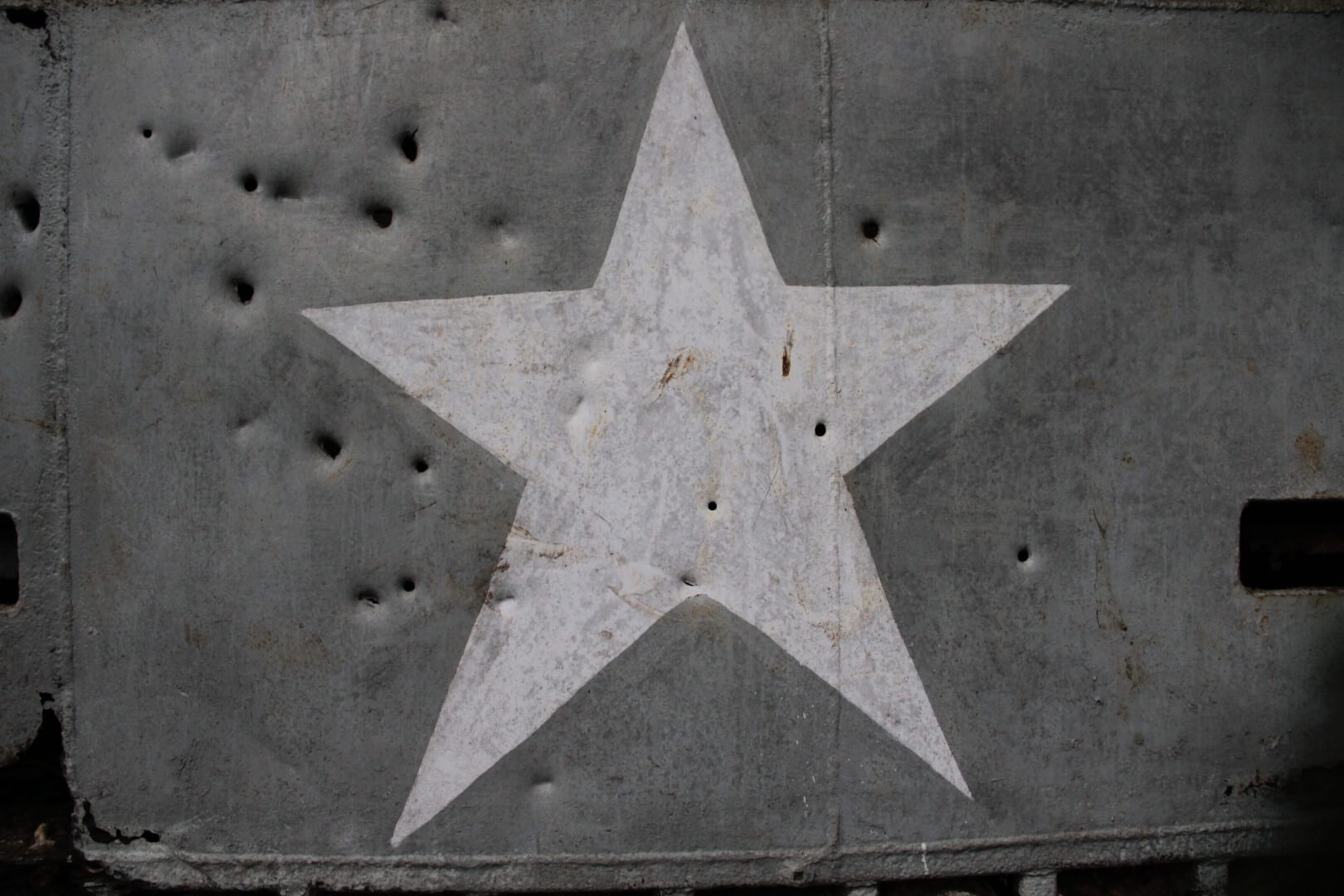
The island is a place where visitors can be transported back in time through the personal effects of the many young men who lived, fought and died on these shores.
“The ocean surrounding Morotai is a treasure trove”
For divers, the ocean surrounding Morotai is also a treasure trove. Four planes are submerged here, along with a US Army minibus, three trucks and a jeep; all casualties of the fighting on Morotai, now claimed by the sea and grown into makeshift reefs for the bustling metropolis of marine life that calls them home.
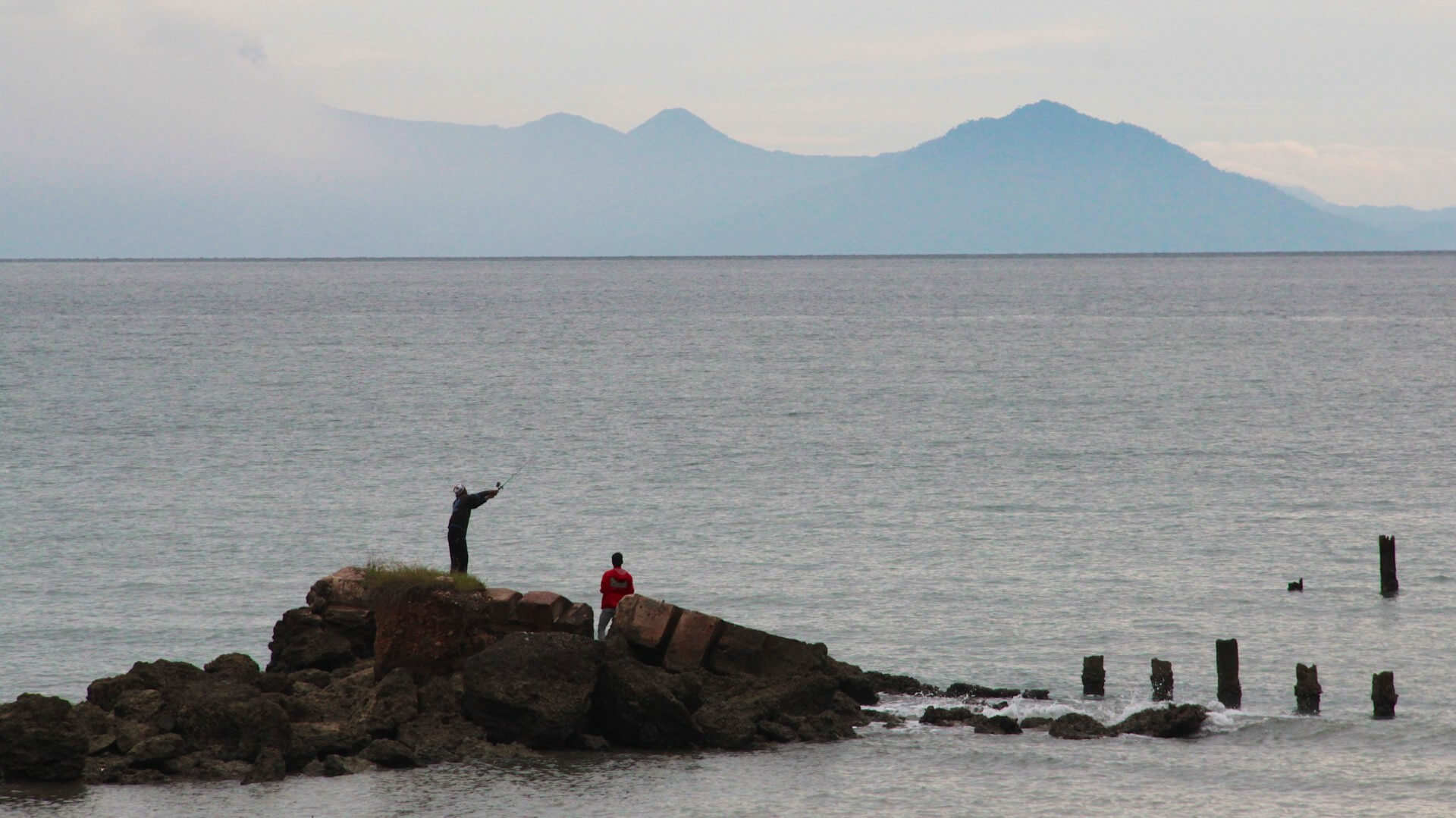
Just beyond the breakers at Morotai, there are loads of little islands clustered together and waiting to be explored. Each one offers something different, and every stop is an unforgettable experience. Here are four of the white sandy atolls we touched down on during our stay:
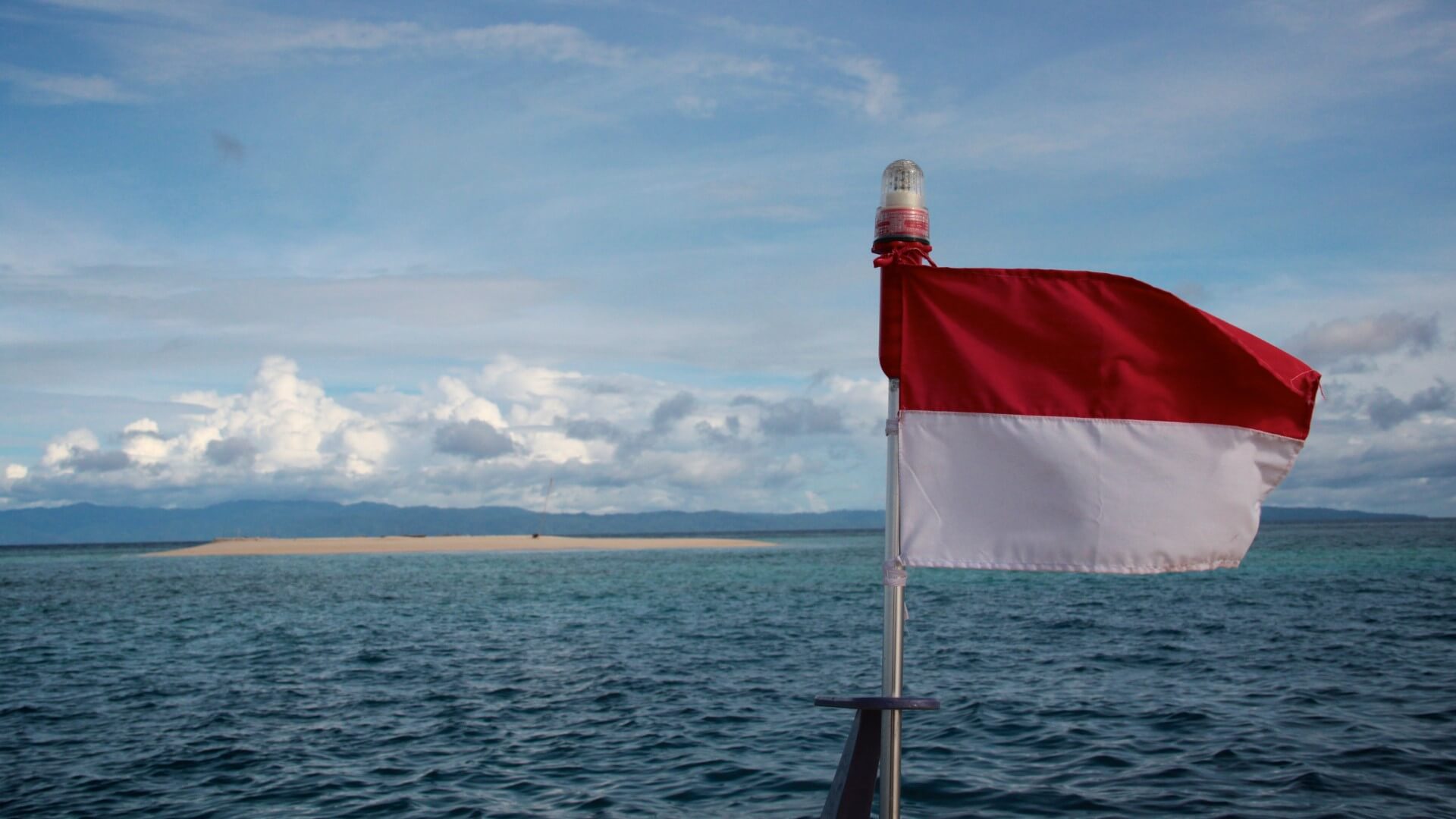
Pasir Putih
This natural sandbank (it’s name means ‘white sand’) is surrounded by immaculate turquoise waters and is completely isolated. The perfect place to enjoy some snorkelling, sunbathing and blissful escapism on your very own desert island. Just don’t forget to get rescued!
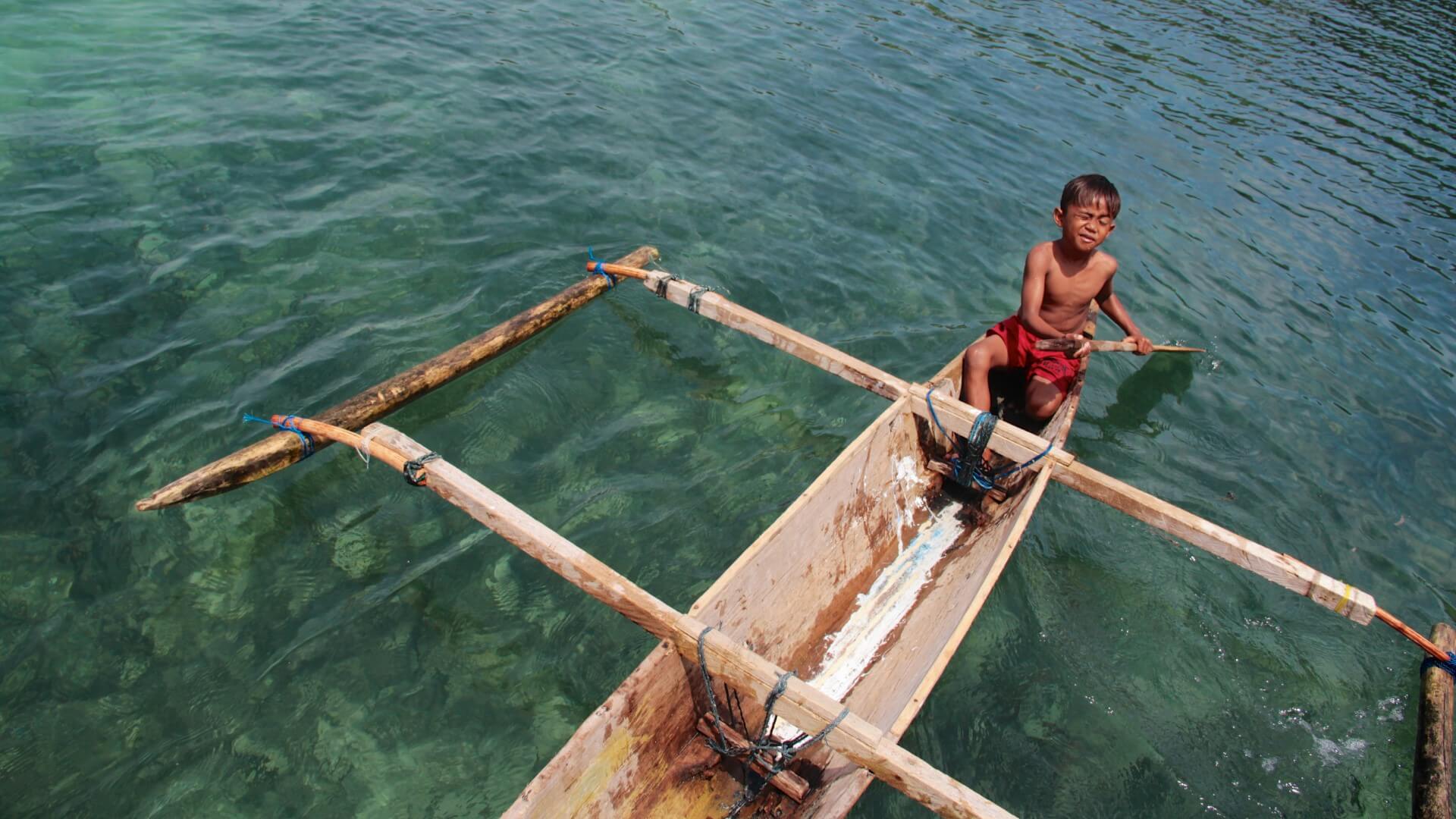
Kolorai
Kolorai is a cute little village on a coral island, where locals carve boats by hand from blocks of wood, sleepy cats nap in the sunshine and giggling children fish from a rickety jetty. Everyone is very welcoming, and you can potter the lanes of the village taking pictures. Here you’ll find the unmistakable warmth of a tropical island welcome.
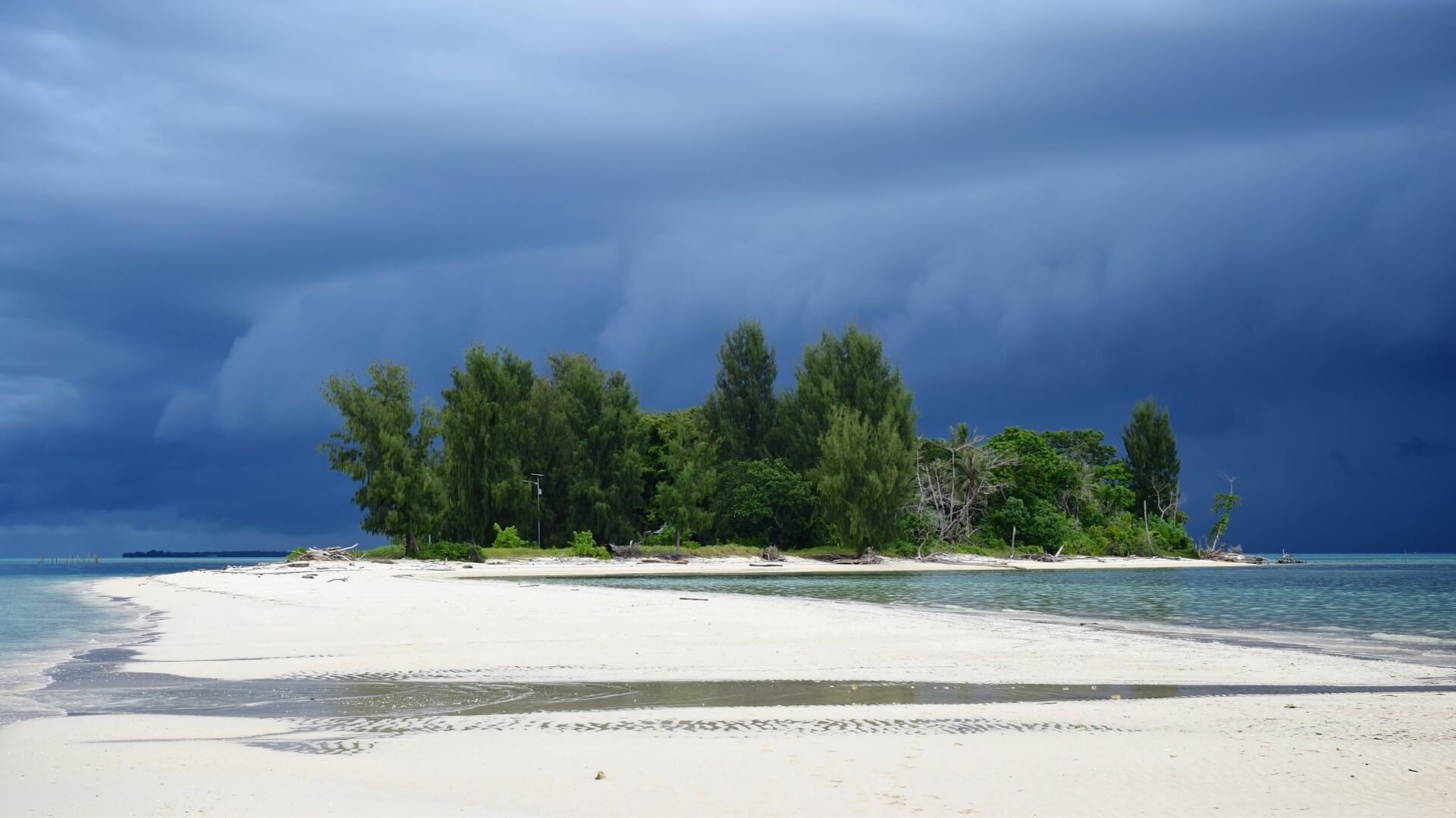
Dodola
Dodola is actually two islands, sheltered by trees and connected by a thin isthmus that emerges at low tide and then shrinks away again under the waves. The surrounding waters are great for swimming and snorkelling. If you have a drone camera, this is a seriously cool place to get some dramatic aerial snaps.
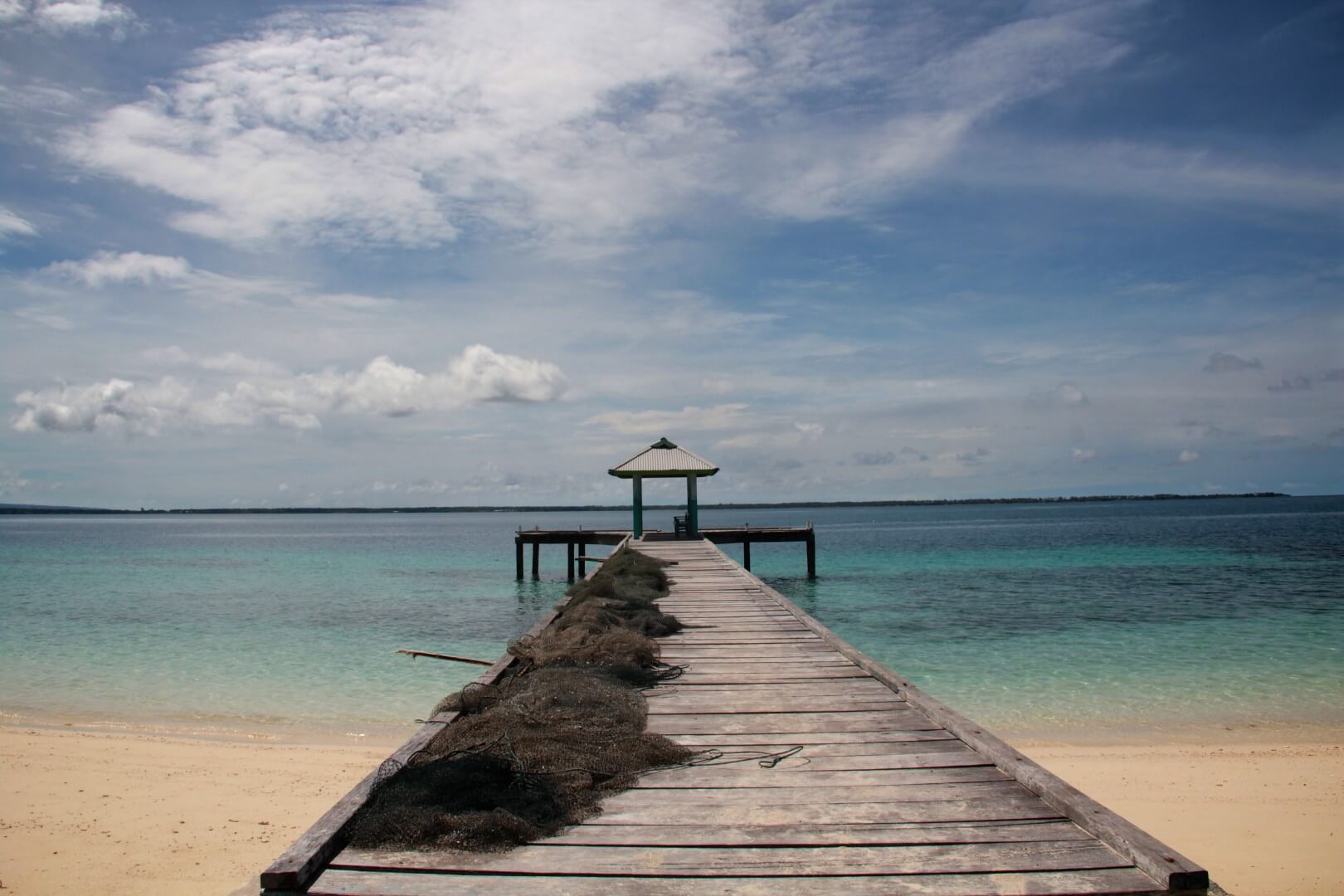
Kokoya
What can you say about Kokoya, other than ‘paradise’. Your only companion on this deserted island will be the gentle lapping of waves around the coral lagoon that fringes the shore, or maybe a couple of red crabs scuttling into rock pools. Kokoya is your own personal tropical island hideaway. Home to several secluded beaches; this is the perfect setting for a romantic escape.
Each of Morotai’s neighbouring islands can be reached easily by chartered speedboat. Depending on the season, the seas can get a little choppy, so be prepared for some turbulence. Pasir Putih is inaccessible from September to December due to high waves. The best time of year for island hopping is between February and August.
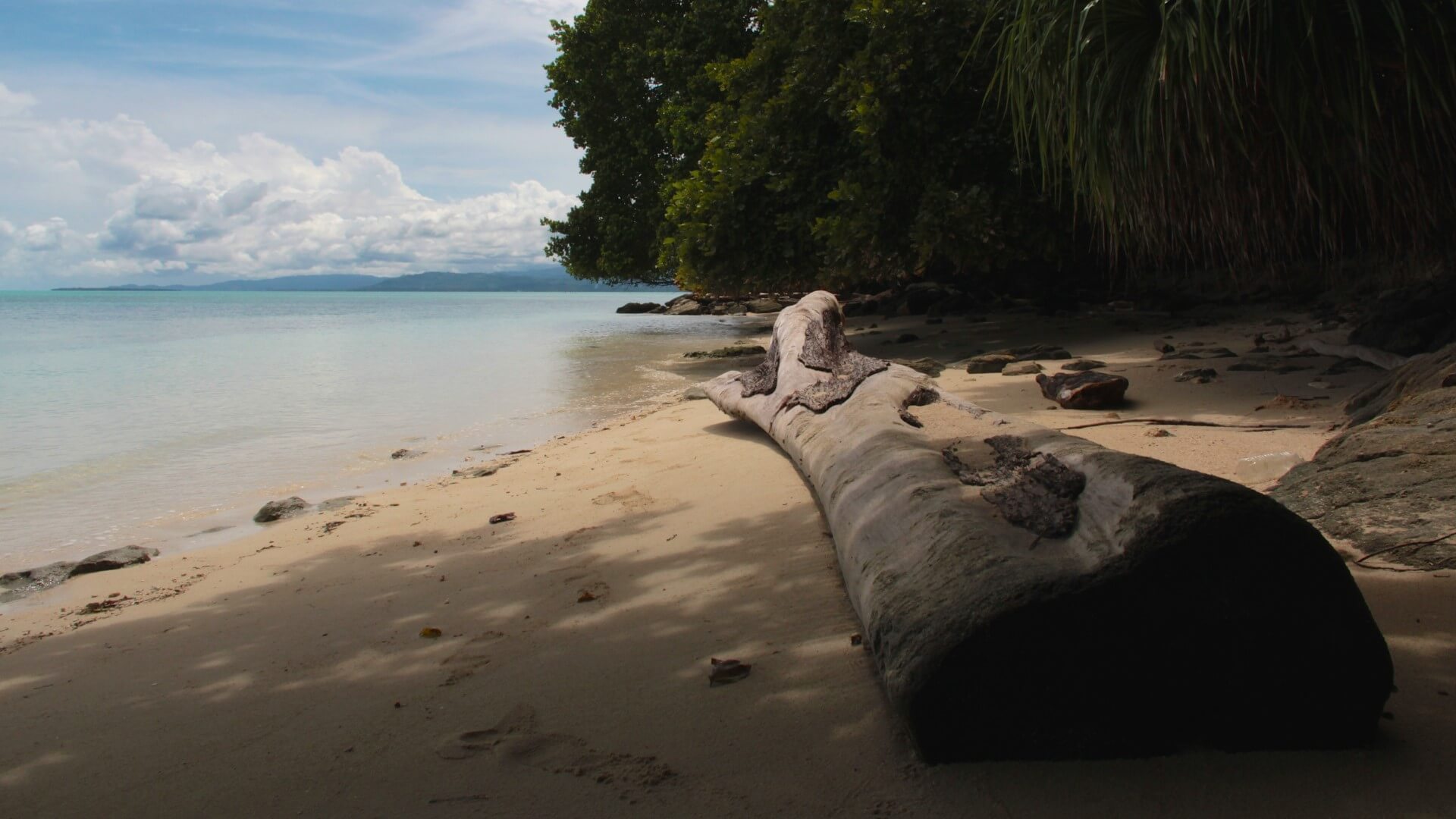
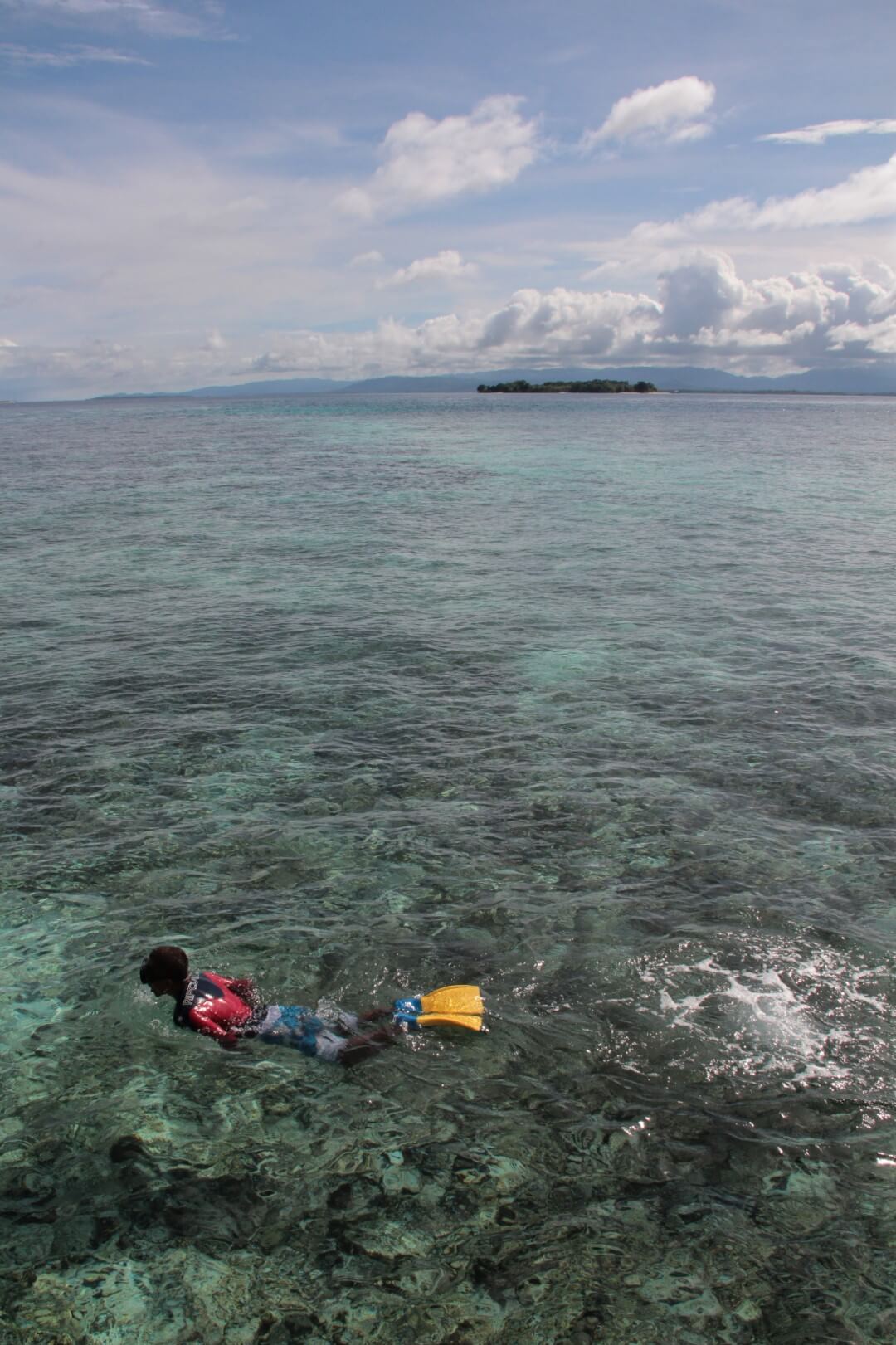
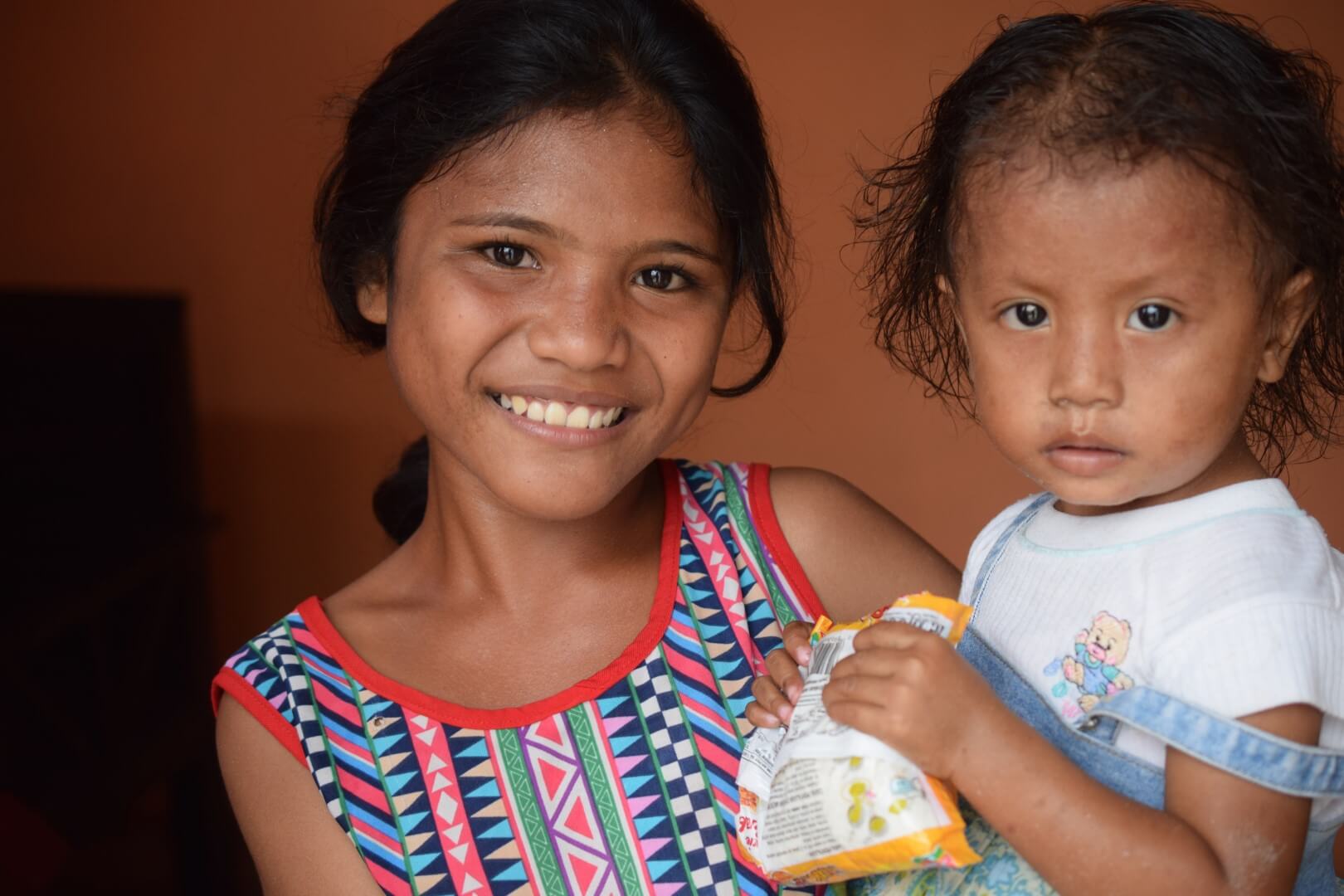
Back on the main island of Morotai, daily life goes on as normal. Wooden houses are perched on stilts, children are playing in the water of a well, goats are foraging in search of something to munch and the percussive tip-tapping of carpentry can be heard over a gentle hum of daily chatter.
Village life here is sedate and special. Many houses follow the traditional Bugis design; lifted up on wooden stilts and surrounded by little gardens where vegetables grow and flowers bloom in the tropical sunshine.
At markets you’ll see more of a hubbub: colourful foods such as chili, mangos, limes, garlic and tomatoes are crammed into a rainbow of hues on market stalls; chuckling women sell their wares, grinning red with betel nut; and Bentor (motorized rickshaws) buzz passengers to their destinations in a colourful blur of headlamps and racing paint.
